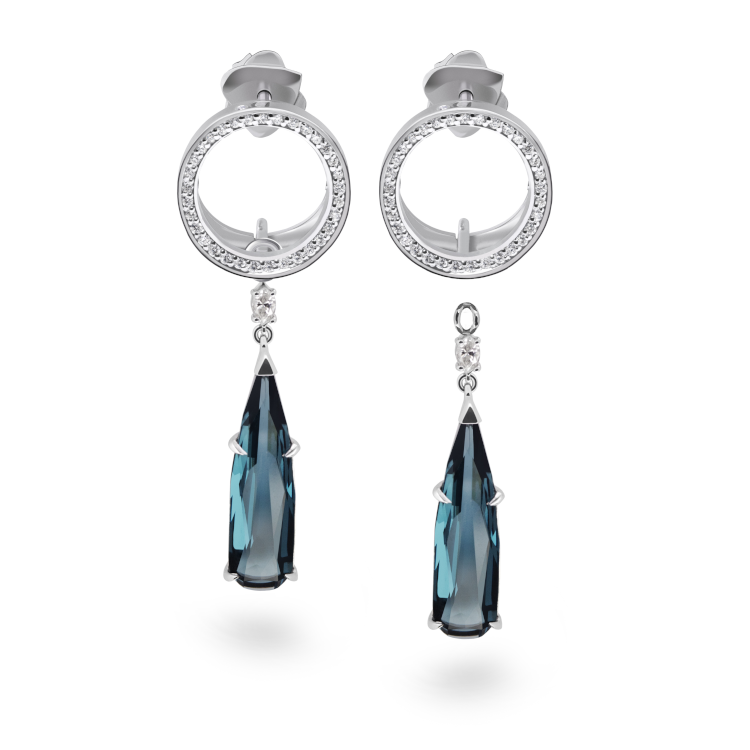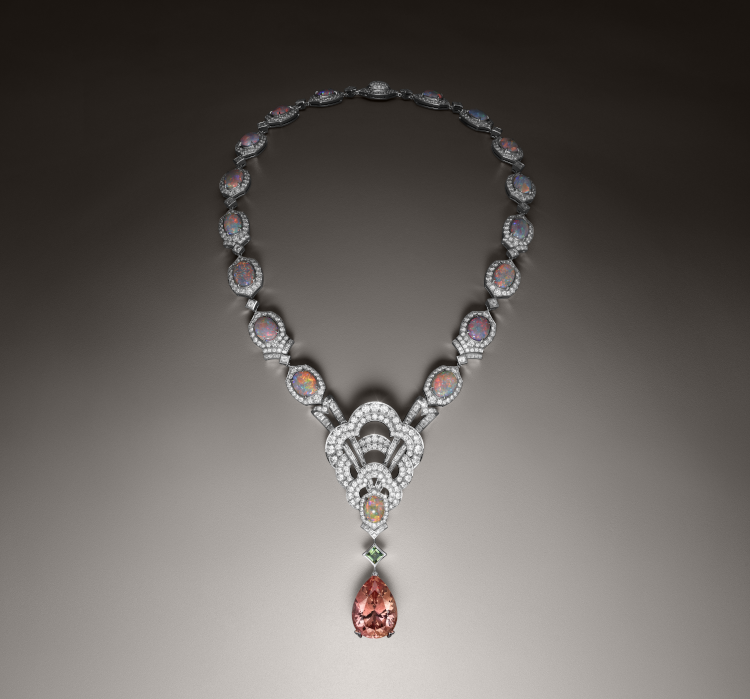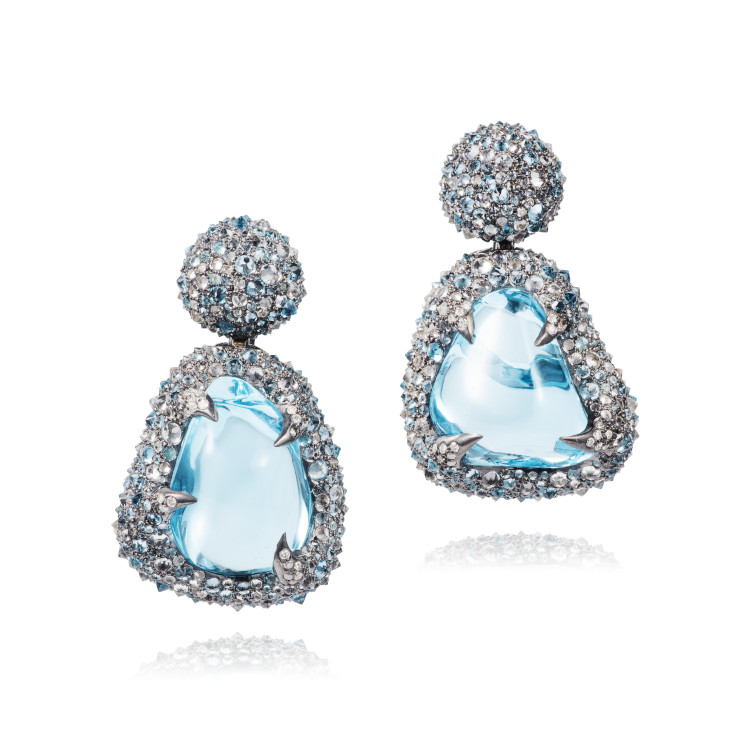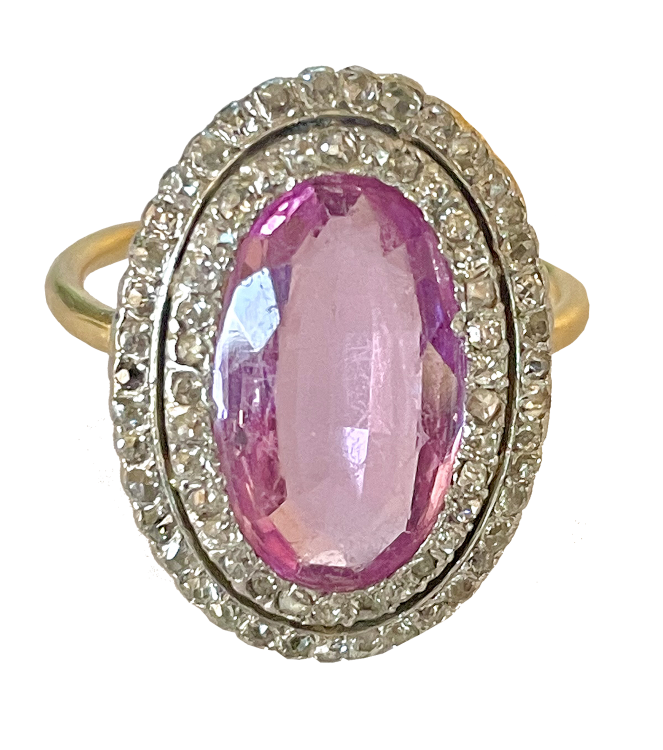Topaz: A versatile gemstone with pizzazz – Jewelry Connoisseur
This reasonably numerous stone is readily available in a swath of stunning shades that precious jewelry clients can’t assist however enjoy.
Topaz has actually been understood and appreciated for more than 2 centuries. A tough fluorine aluminum silicate, it gets its name from Old French (topace), Latin (topazus) and Greek (topázios). The ancient Romans thought it secured the user and brought success, and in the Middle Ages, it was believed to fend off the wicked eye and treat a fever.
Throughout the Renaissance, Europeans thought topaz might soothe anger and prevent magic spells. “In the 18th century, topaz ended up being significantly popular in Spain and France. By the Victorian age, its usage was prevalent,” states precious jewelry historian Mary Borchert of San Francisco-based Lang Antiques. “Topaz is presently among the most popular gems utilized in modern precious jewelry.”
It’s likewise cost effective, notes Yehouda Saketkhou, creator of San Francisco-based jewelry expert Yael Styles. “We utilize the gem when we wish to keep our precious jewelry at a more available rate point.”
Topaz can be discovered in numerous areas, however Brazil is amongst the biggest providers and has actually produced clear crystals weighing numerous kilos.
Irradiating the blues
In its natural state, topaz is colorless, however it handles a variety of shades due to micronutrient and pollutants. Pink, red and violet tones happen when chromium changes aluminum in the crystal structure. Yellow, brown and blue are because of flaws at the atomic level.
” Due to the fact that blue topaz is so uncommon in nature, strategies were established in the late 1940s to develop the preferable blue shades by irradiating the gem,” relates antique-jewelry professional Ioannis Alexandris of dealership Gemolithos in Munich, Germany.
Although topaz is not the only gem to undergo this treatment, he states, it drew in attention some years earlier due to the fact that the procedure makes the gem somewhat radioactive. To avoid threat to customers, the United States Nuclear Regulatory Commission (NRC) and comparable bodies around the world required setting the stones aside for a couple of months after treatment to let the radioactivity decay. Distributors of these gems are accredited by the NRC and should perform security tests prior to sending out the stones to market.

The treatment usually produces 3 blue shades, states Grant Hamid of gem provider Hamid Bros in Sydney, Australia: sky, Swiss, and London blue. “Due to their big production [volume], the rate has actually stayed rather steady over the last ten years, with small boosts in London-blue product. It is usually provided in adjusted sizes in oval, emerald, round and pear shapes.”
Saketkhou utilizes generally blue topaz, keeping in mind that “our customers are drawn to Swiss and London blue in contemporary geometric and special shapes.”
Blue is likewise the most asked for color for Bangkok-based brand name Kavant & & Sharart, which includes this topaz range in numerous collections. “We like to do custom-made cuts,” states innovative director Shar-Linn Liew, mentioning the brand name’s Twist Topaz earrings as examples.

At San Francisco-based seller Christensen & & Rafferty, “blue topaz is a delighted classic,” according to co-owner Colleen Rafferty. The shop has no issue sourcing such pieces from the designers it brings. Princess is among the most popular cuts, she reports, and rates for the gems has actually been consistent over the last couple of years. “We discover that with numerous women letting their hair go gray and white, blue topaz looks magnificent on them,” she smiles.
Ashley Davis of seller Davis Jewelers states that in the years she’s remained in the market, “topaz, particularly blue topaz, has actually been the leading semiprecious color seller.” In addition to its home brand name, her shop in Louisville, Kentucky, brings numerous upmarket brand names that include the gem. Costs, especially for London blue, have actually increased rather over the previous numerous years in designer pieces, states Davis. “It is still a financial choice, and blue is a color liked by a lot of that it is constantly going to belong.”

Au naturel
While dealt with topaz is easily offered, some choose the stone’s natural colors. Helen Serras-Herman of Gem Art Center near Tucson, Arizona, values topaz in its initial type for both precious jewelry and sculptural gem art. “I have actually utilized natural white [or] blue topaz crystals from Brazil, and natural champagne-color topaz from Russia,” she states. “The natural zoning in these crystals works well in my styles.”
Another fan of the natural and more soft colors is Amina Okpukpara, creator of Mina Stones in Abuja, Nigeria. “We simply enjoy topaz. The solidity is right, specifically for earrings and pendants, and need is increasing,” she states. She sources her stones within the nation, developing styles with standard African concepts. Her preferred topaz is the colorless dazzling cut, which she utilizes as “an option to diamonds as accents, and even as center stones.”

Imperial colors
Imperial topaz is an uncommon type found in Russia’s Ural Mountains in the 17th century. While it “initially described pink topaz from Russia in honor of the Romanov household, the trade term today is more carefully connected with reddish-orange to sherry-colored product discovered in Brazil,” discusses Edward Boehm, CEO of gem provider Raresource in Chattanooga, Tennessee.
Following its discovery near the town of Ouro Preto in the 18th century, the Brazilian product “started changing the minimal supply from Russia,” he states– however the name stuck. Today, traders usually describe the rarer pink, purple and red tones by their shades “to separate them from other royal topaz of combined colors,” he includes.

Constantin Wild, owner of the eponymous brand name in Idar-Oberstein, Germany, offers the royal range to haute joaillerie brand names worldwide, stating it “all that a gem requires to be: It is stunning, with wonderful colors, excellent solidity, and is remarkably shimmering. It is a lover gems.” Due to the fact that of its rarity and minimal production, rates are high, and he anticipates them to continue increasing. The most popular cuts, he’s discovered, are classics such as ovals, cushions and pears, which “have classic design no matter style patterns.”
Imperial is a favorite of Parisian designer Lorenz Baumer too. “I value its softness and radiance and what it gives a gem by making it airy, refined and vibrant,” he states. He typically utilizes it in rectangle-shaped or emerald cuts for a center stone, as in his Papillon ring. Bangkok-based Alessio Boschi utilizes mainly natural topaz. He, too, prefers the royal type– though its minimal schedule and high rates imply it’s just for unique pieces, he states. He likewise utilizes blue topaz when his customers request it. Whatever the color, he keeps, “the stones are stunning, and they all have a location in the marketplace.”

Main image: A 15.32-carat bi-color royal topaz cut by Constantin Wild. (Constantin Wild)
Source link
